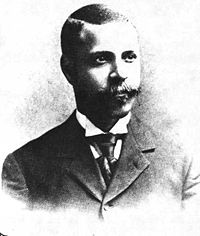
Daniel Murray (archbishop)
Encyclopedia
Daniel Murray was a Roman Catholic Archbishop of Dublin.
 He was educated at Dr. Betagh's school, and at Salamanca
He was educated at Dr. Betagh's school, and at Salamanca
, and ordained priest in 1790. After some years as curate in Dublin he was transferred to Arklow, and was there in 1798 when the rebellion broke out. The soldiers shot the parish priest in bed and Murray, to escape a similar fate, fled to the city where for several years after he ministered as curate
.
In 1809 at the request of Archbishop Troy he was appointed coadjutor bishop
, and in 1823, on Dr. Troy's death, he became Archbishop of Dublin. While coadjutor he had filled for one year the position of president of Maynooth College.
Murray was an uncompromising opponent of the "veto
" and a strong supporter of the Catholic Association
. On other questions he was less extreme, and was in such favour at Dublin Castle
that he was once offered a seat on the Privy Council
, which he declined. He supported Stanley's National Education scheme and among the first Education Commissioners, he wished to tolerate the Queen's Colleges, in opposite to the views of Archbishop John MacHale
. He had hesitation, however, in accepting the adverse decision of Rome, and was present at the Synod of Thurles
where the Queen's Colleges were formally condemned.

Salamanca
Salamanca is a city in western Spain, in the community of Castile and León. Because it is known for its beautiful buildings and urban environment, the Old City was declared a UNESCO World Heritage Site in 1988. It is the most important university city in Spain and is known for its contributions to...
, and ordained priest in 1790. After some years as curate in Dublin he was transferred to Arklow, and was there in 1798 when the rebellion broke out. The soldiers shot the parish priest in bed and Murray, to escape a similar fate, fled to the city where for several years after he ministered as curate
Curate
A curate is a person who is invested with the care or cure of souls of a parish. In this sense "curate" correctly means a parish priest but in English-speaking countries a curate is an assistant to the parish priest...
.
In 1809 at the request of Archbishop Troy he was appointed coadjutor bishop
Coadjutor bishop
A coadjutor bishop is a bishop in the Roman Catholic or Anglican churches who is designated to assist the diocesan bishop in the administration of the diocese, almost as co-bishop of the diocese...
, and in 1823, on Dr. Troy's death, he became Archbishop of Dublin. While coadjutor he had filled for one year the position of president of Maynooth College.
Murray was an uncompromising opponent of the "veto
Royal veto of the appointment of bishops
A proposed Royal veto of the appointment of bishops was a contentious topic in the politics of the United Kingdom, in the period 1808 to 1829. According to the proposal, any restoration of the full episcopal hierarchy of the Catholic Church, in Great Britain, should be subject to a veto of the...
" and a strong supporter of the Catholic Association
Catholic Association
The Catholic Association was an Irish Roman Catholic political organisation set up by Daniel O'Connell in the early nineteenth century to campaign for Catholic emancipation within the United Kingdom of Great Britain and Ireland. It was one of the first mass-membership political movements in...
. On other questions he was less extreme, and was in such favour at Dublin Castle
Dublin Castle
Dublin Castle off Dame Street, Dublin, Ireland, was until 1922 the fortified seat of British rule in Ireland, and is now a major Irish government complex. Most of it dates from the 18th century, though a castle has stood on the site since the days of King John, the first Lord of Ireland...
that he was once offered a seat on the Privy Council
Privy council
A privy council is a body that advises the head of state of a nation, typically, but not always, in the context of a monarchic government. The word "privy" means "private" or "secret"; thus, a privy council was originally a committee of the monarch's closest advisors to give confidential advice on...
, which he declined. He supported Stanley's National Education scheme and among the first Education Commissioners, he wished to tolerate the Queen's Colleges, in opposite to the views of Archbishop John MacHale
John MacHale
John MacHale was the Irish Roman Catholic Archbishop of Tuam, and Irish Nationalist.He laboured and wrote to secure Catholic Emancipation, legislative independence, justice for tenants and the poor, and vigorously assailed the proselytizers and the anti-Catholic anti-national system of public...
. He had hesitation, however, in accepting the adverse decision of Rome, and was present at the Synod of Thurles
Synod of Thurles
The Synod of Thurles was the first synod of Catholic clergy since the Middle Ages. The Synod was called by Paul Cullen who had been just appointed Archbishop of Armagh and Primate of All Ireland. The Synod took place in St...
where the Queen's Colleges were formally condemned.

